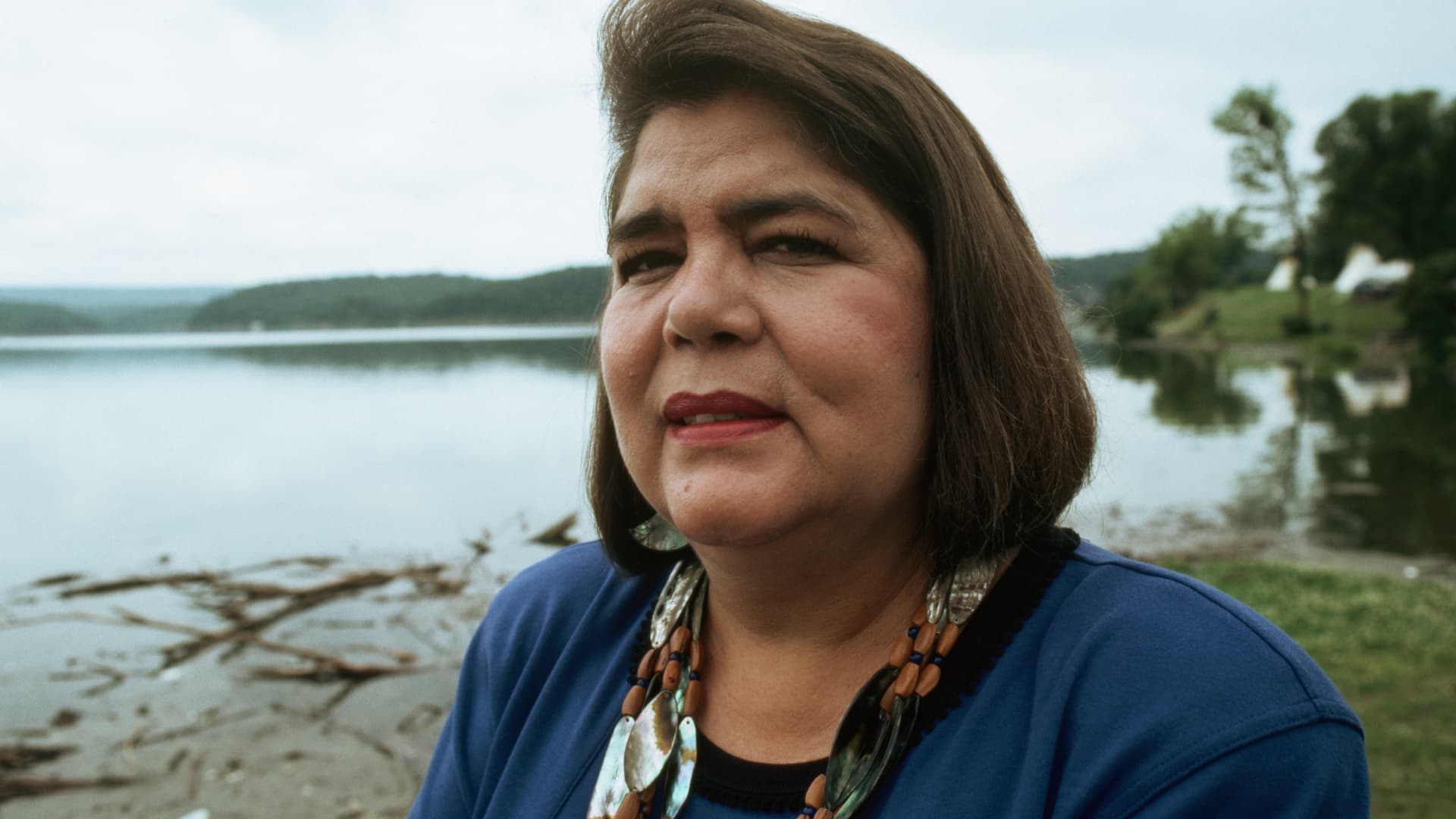If you’re not but acquainted with the title Wilma Mankiller, you most likely will be soon: The trailblazing former Cherokee Nation chief is coming to a U.S. quarter close to you.
When Mankiller – whose household surname refers to an ancestral tribal army rank – died in 2010 at the age of 64, she was remembered as a feminist pioneer and fierce advocate for Native Americans. Now, she’s once more being honored – this time, together with her picture emblazoned on a new series of U.S. quarters rolling out this yr, honoring iconic women from American historical past.
Her quarters will start circulating this spring, in accordance to the U.S. Mint.
Mankiller made history in 1985 as the first-ever girl to be elected chief of a significant Native American tribe. But her appointment to that place was solely the starting of her accomplishments, as she went on to rework the Cherokee Nation’s tribal infrastructure and economic system.
In 1998, her management earned her the Presidential Medal of Freedom from then-President Bill Clinton. “She was not solely the guardian of the centuries outdated Cherokee heritage, however a revered chief who constructed a brighter and more healthy future for her nation,” Clinton said at the time.
Here’s what you need to know about the historic chief, and her many years of accomplishments:
An historic first
When Mankiller was 10 years outdated, her household left the Cherokee Nation’s capital metropolis of Tahlequah, Oklahoma, so her father might take a warehouse job in San Francisco. She later called the transfer “my very own little Trail of Tears,” as a result of it took her away from her household’s tribe and her grandfather’s farm, the place she’d spent her childhood.
Living in the Bay Area set her down a path of social activism. In 1969, when she was in her mid-20s, Mankiller witnessed a gaggle of Native Americans occupying Alcatraz Island, claiming the federal land to protest the therapy of Native Americans by the American authorities.
In her 1993 autobiography, “Mankiller: A Chief and Her People,” Mankiller wrote: “When Alcatraz occurred, I grew to become conscious of what wanted to be completed to let the remainder of the world know that Indians had rights, too. Alcatraz articulated my very own emotions about being an Indian.”
Within the subsequent decade, Mankiller moved again to her grandfather’s farm in Oklahoma together with her two daughters, and have become concerned with Cherokee Nation tribal affairs. She labored on well being and teaching programs targeted on the tribe’s youth, spearheaded new housing tasks and expanded rural water entry as the head of the Cherokee Nation’s group improvement division.
In 1983, then-tribal chief Ross Swimmer invited her to be a part of his reelection marketing campaign as his working mate. Her candidacy impressed sexist hate mail and death threats, however the ticket finally succeeded, making Mankiller the first feminine deputy chief of the Cherokee Nation.
Two years later, Swimmer stepped down. Mankiller took over as the Cherokee Nation’s first-ever feminine principal chief. She’d go on to win re-election twice, successful a staggering 83% of the vote in 1991.
Despite that reputation, Mankiller stated she nonetheless confronted “unimaginable opposition” due to her gender from members of her personal tribe in addition to outsiders who objected to a lady holding her title. She later told NPR that her most constant help truly got here from older members of the tribe.
“I’ve at all times discovered that fascinating,” she stated. “My husband and I’ve talked about it, and I believe we have come to the conclusion that perhaps older folks have a better sense of historical past — and perceive that there was a time when girls performed a extra important function in the tribe, and there was extra steadiness and concord between women and men in the Cherokee Nation.”
A revitalizing pressure
During Mankiller’s tenure, which led to 1995, the Cherokee Nation’s membership tripled to greater than 170,000 residents. She doubled its annual income by supporting Native businesses, together with factories, retail shops and eating places, bingo operations, and reward retailers, amongst others.
She additionally pulled off an unprecedented transfer: In 1990, Mankiller brokered an settlement with the Bureau of Indian Affairs to give her tribe direct management over hundreds of thousands of {dollars} in U.S. federal funding, serving to set up tribal sovereignty for each the Cherokee Nation and different tribes.
“Through self-governance, we are able to higher decide the companies wanted by tribal members and fulfill these wants with out the bureaucratic delays of the previous,” Mankiller said at the time.
Mankiller’s major aim was to stream as a lot of that cash as attainable into packages geared toward improving education and health care for the Nation’s residents: She used the elevated income to construct new well being clinics, create job coaching packages and help early-education packages. Today, specialists say that the spirit of self-reliance she promoted straight impressed different Native American tribes to comply with go well with.
“I used to be attempting to encourage our folks to belief their pondering once more, to look to themselves for options,” she wrote in her autobiography. “I would like to be remembered as the one who helped indigenous folks restore religion in themselves.”
Sign up now: Get smarter about your money and career with our weekly newsletter
Don’t miss:
Ex-U.S. Treasurer: The new Maya Angelou quarters could inspire ‘a lot of future leaders’
Mary Ellen Pleasant: How one of the first black self-made millionaires built her fortune

